OMG, AI! WTF?! VOL. 3
Pinterest is incorporating AI into their posting workflow (but maybe just for advertisers?) and another Midjourney ➡ Runway experiment.
This volume of OMG, AI! WTF?! looks into the recent generative image tool reveal from the 2023 Pinterest Presents webinar. It’s an annual online gathering to entice advertisers and agency clients to earmark their holiday ad budgets for Pinterest placements.
Generative AI imaging tools will be available to Pinterest’s ad partners (only?) this holiday season, but what are the potential ripple effects this move could have on commercial creatives like us at Echo Echo Studio, and what does this mean for the Pinterest community?
Lastly, don’t miss another mini-tutorial at the end running through how Echo Echo Studio is tinkering with new methodologies for VFX + animation using only generative AI tools to produce media. (It’s still weird!)
Pinterest + AI?
“A visualization tool we’re building specifically for advertisers”

Pinterest Presents is a big glossy advertiser webinar that educates advertisers and agency clients on why they should spend their holiday-season ad budget on Pinterest placements. The seek-and-save platform grabbed some impressive Hollywood talent (Heidi Gardner from NBC’s SNL, Rashida ‘Sheedz’ Olaywiola from HBO’s South Side, and Harvey Guillen of FX’s What We Do in the Shadows) to help distill their new toolset for advertisers, agencies, and retailers on the platform. It’s honestly a fun and digestible watch. The presentation goes over how to better measure trends, engage users, and convert customers, but one feature oh-so-quietly mentioned by Sabrina Ellis, Chief Product Officer at Pinterest, piqued the attention of this newsletter specifically: Pinterest Creative Studio. (It begins at the 28:28 mark in the presentation video.)
WTF is Pinterest doing with AI?
I know what you’re thinking—this is an AI newsletter, so why the Pinterest detour?
Well, surprisingly, Echo Echo’s Pinterest presence, with its meager sub-100 followers, is a highway that guides a whopping 70% of traffic to our website. Pinterest is a crucible of creative media and design content; the platform lays down a perfect pathway for us to parade our creations and client work, catching the eyes of shoppers, retailers, agencies, and those simply on a quest for inspiration. We’ve been lucky to have a few pins really take off and generate evergreen traffic to the studio’s blogs and portfolio.
Your average Pinterest member isn't just casually browsing; they are on a mission. Pinners are propelled by their unique interests and are ready to re-pin, share, and invest in the products and stories that catch their eye during their aspirational quests. I’ve joked that Pinterest is the last positive place on the internet.
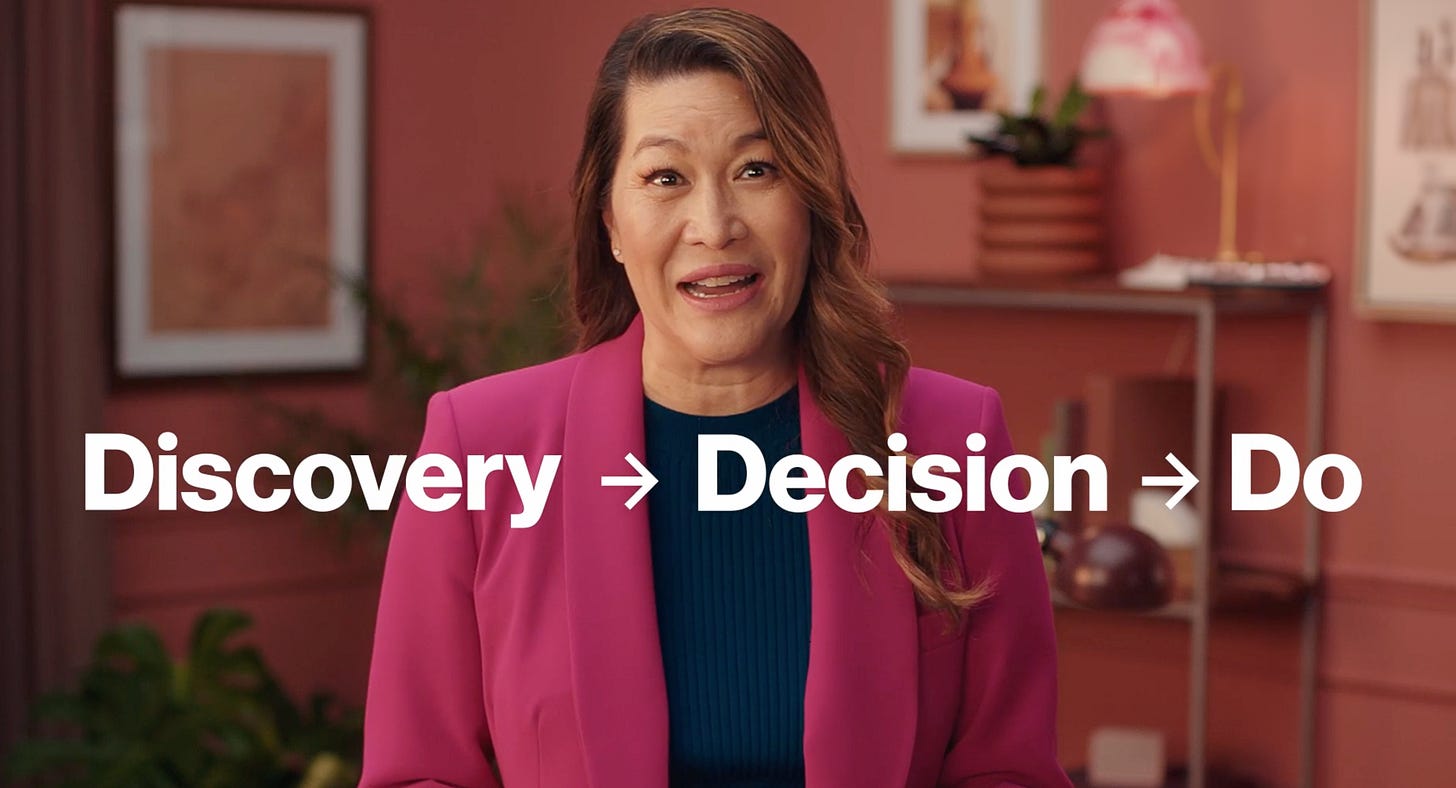
Echo Echo cherishes the connection we’ve made with the Pinterest community. Pinners aren’t just producing clicks and likes; they are a treasure trove of insights and feedback. By engaging with our portfolio, tutorial blogs, and retail products, we’ve been able to better tailor our marketing efforts and product designs to our community, of customers AND commercial production clients. Furthermore, it isn't just a showcase; it's also a revenue stream. We generate affiliate income for the studio and our clients thanks to Pinterest and its community of curious (and active) creatives.
Where is this headed?
A month passed and curiosity got the better of me, so I buzzed Pinterest's support team to see if more had been uncovered about the Pinterest Creative Studio Program. Their (prompt!) response was a masterpiece of vagueness.
An OMG, AI! WTF?! critique of the initial feature claims of Pinterest Creative Studio:
Since this e-mail response left me feeling unsatisfied and I haven’t seen anything else announced since September, I revisited Pinterest Presents and reviewed the webinar's claims directly from the transcript:
“It’s totally free”
“Dynamically create tailored ads that appeal to each pinner’s specific taste.”
“Lifestyle images on average drive a significantly higher click-through-rate over simple product images…but this is costly.”
“No photoshoot required.”
Well, it’s only “free” for advertisers who are spending their media dollars, and you can assume that the Pinterest engineers are aggregating early-adopter user data for internal testing, or one would hope that is occurring if Pinterest plans to improve the feature.
Additionally, large brands are already able to create tailored ad experiences that appeal to incredibly specific audiences with the help of demographic drill-downs offered by Google, Meta, and even Pinterest; it’s a matter of a few drop-down menus when you’re setting up your ad campaign. Likewise, Meta already utilizes adaptive creative where they are able to dynamically change the background, text and colorways of the product to better appeal to the user.
It will be interesting to see if Pinterest will be transparent about their training data for their Creative Studio AI image generation tools too—like, are they training their Creative Studio feature on other creators’ previous pins? Did they partner up with another image-generation service to provide this data?
And how much specificity will pinners be able to have in the composition of their images? Is it like Midjourney, where there are features for making targeted revisions? Nothing else about Creative Studio’s rollout has been announced by Pinterest since September’s webinar, so I may be just grasping at straws.
From our studio’s Digital Director, Geo Vittoratos:
The key phrase in here, to me, is “dynamically create” - which likely means that Pinterest will triangulate the pinner’s visual preference, current trends, and live data on similar users to serve up the best possible ad. Will be interesting to see just how “dynamic” this really is. Does it just pick from some pre-approved options? Does it create new ones throughout the campaign? Live?
As someone from Media $$$ universe, the personalization of ad creative is something all the big platforms are pushing to find. They know that advertisers need more creative to overcome ad fatigue, which happens much faster now, and to be able to fully test how different audiences react to the media campaigns.
However, the personalization of ads brings up other queries that I’m not sure image-conscious brands are ready to handle: The ad I see might be totally different than the ad you see. Does this fracture a brand’s identity? To who is the authenticity owed: the consumer or the brand? How much is each willing to give?
As Echo Echo evolves as a creative design studio that’s integrating AI into our tech stack, the implications for commercial creatives and other Pinterest-ing media makers are at the forefront of our discussions, especially if these features are extended beyond Pinterest’s advertising partners.
Small businesses might hope to rely on Pinterest Creative Studio like they’ve been able to make marketing materials in Canva, but Canva’s higher degree of control will likely keep it on its throne for the time being, especially because Canva excels at being accessible and web-based while still offering a platform-agnostic exporting toolset.
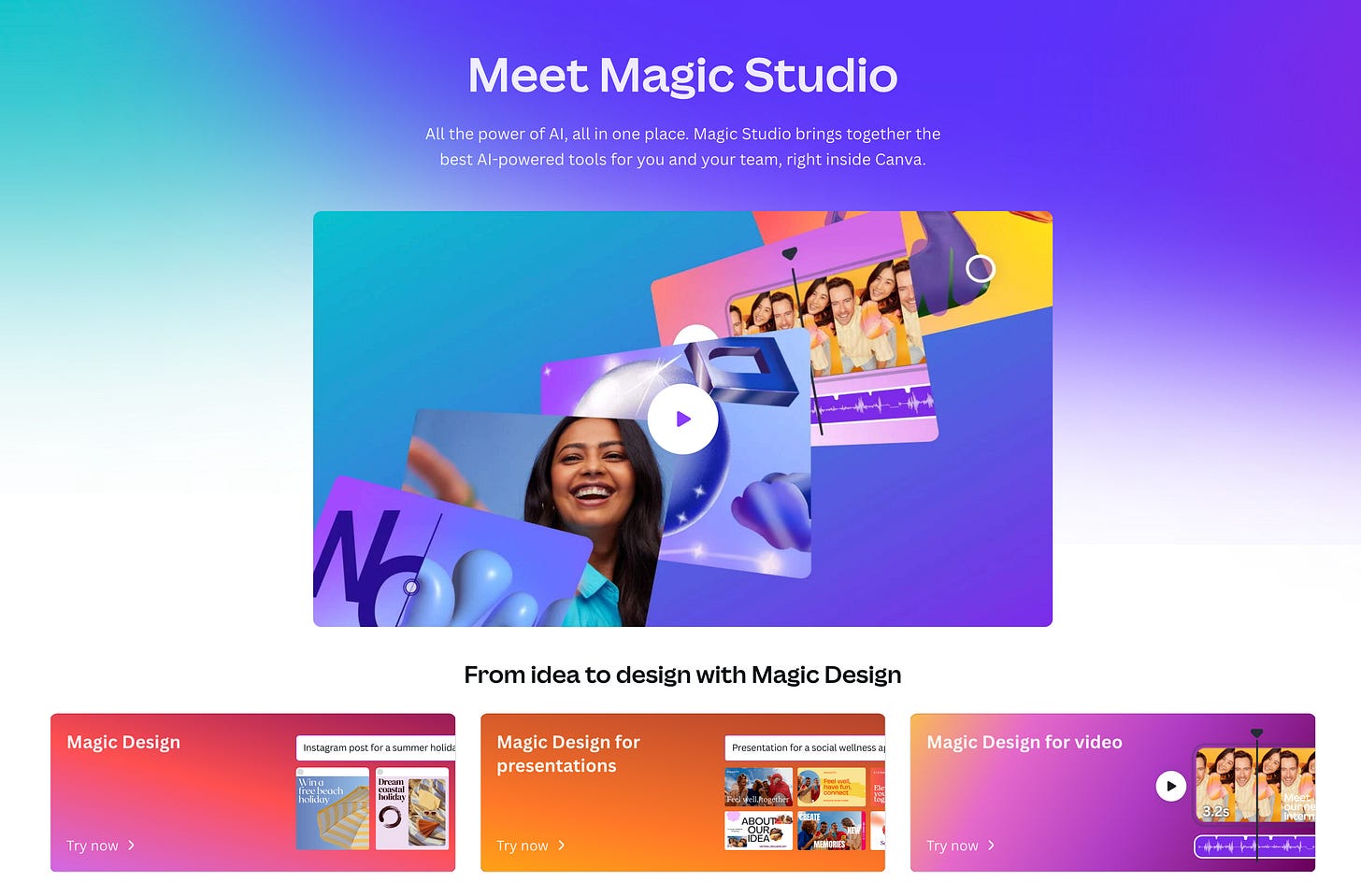
When we’ve developed projects for what will become our Pinterest placements, the assets we conjure up often morph into some of our most cherished portfolio pieces.
Product and lifestyle photography is particularly delightful to create due to the technical precision it demands in its creation. It allows you to draw deep from a rich well of knowledge to craft successful images.
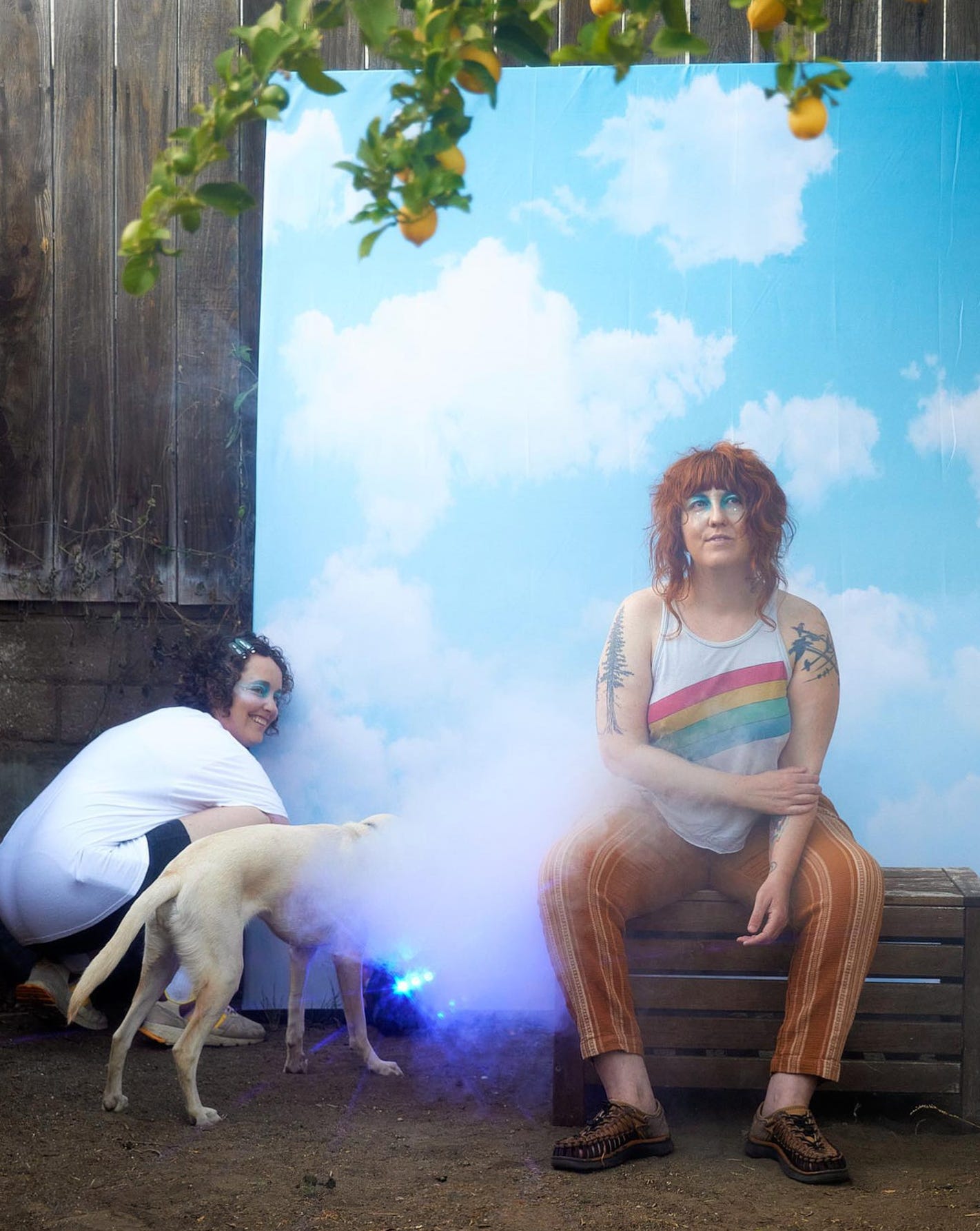
Even on a shoestring budget, with modest light rigs and props, one can achieve stunning results without the crutch of extra Photoshopping or retouching. It's this nuanced understanding of light, motion, and camera mechanics melding together that sets great photographers apart. Being able to deliver an impactful narrative from a single still image is the nitty-gritty of “doing the work,” and AI just isn’t there, yet.
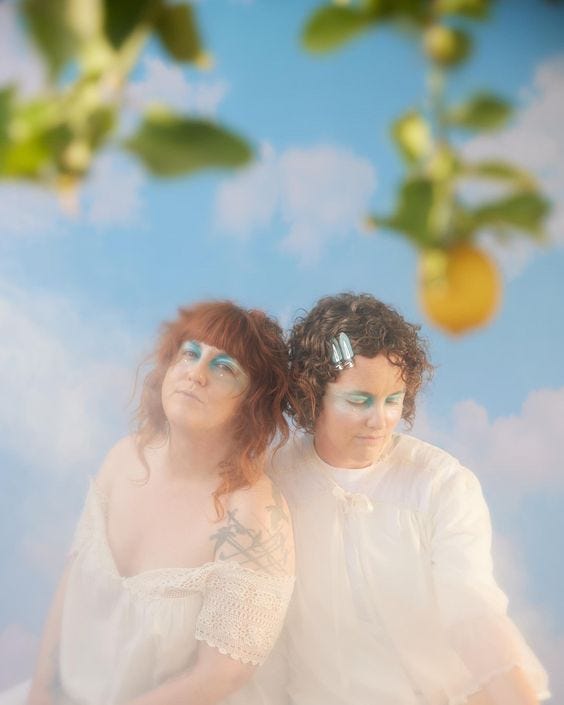
Confidently, our creative skills aren’t on the chopping block any time soon. For now, AI image generations are a bit like herding cats, elusive in consistency, making the future hazy even with the best prompting and iterating.
The unpredictable nature of AI generations is such an untameable wildcard, big brands won’t jump in until they can call the shots on every pixel of asset creation.
Every media artist has a story where they have delayed on-set production to correct the most minuscule details because post-editing is a time and money pit for everyone involved. The pre-fix is worth the sweat for the golden deliverables.
If this Pinterest Creative Studio feature rolls out to pinners beyond advertisers, I foresee small creators and influencers jumping on the bandwagon to pump up affiliate sales. But this might spawn a moderation snag or poison the search algorithm, possibly flubbing up the user experience with deceptive links.
It’s likely some pinners and advertisers could master the automation aspects of Creative Studio, paying for access to catapult their affiliate posts and retail products further into the cosmos of inspiration boards and aspirational pins.
We’ll see.
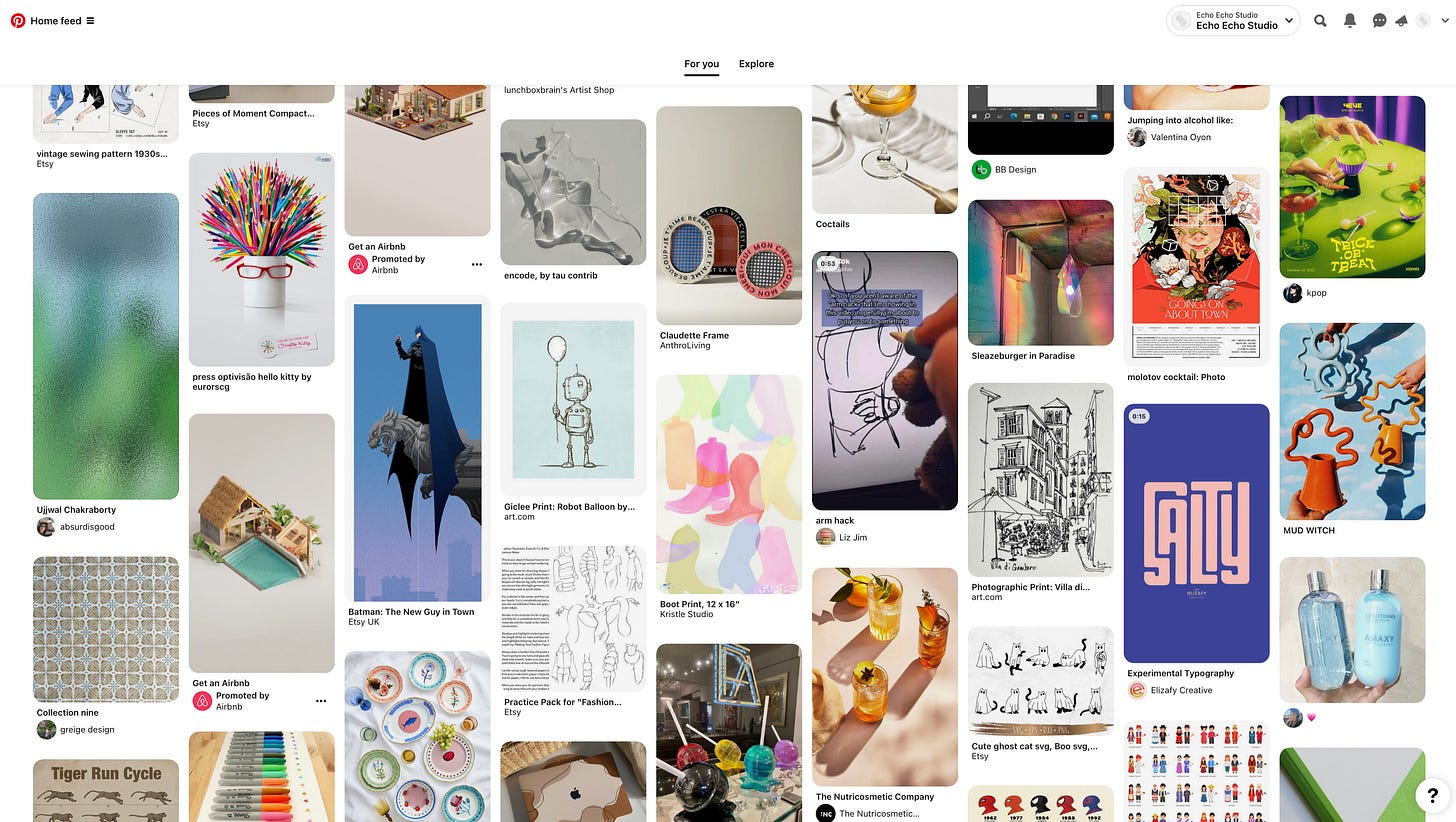
Until then, without more community education from the Pinterest product team, Pinterest advertisers will likely only be stumbling into desired outcomes instead of planning for them, which isn’t necessarily a bad thing, but it makes consistency very difficult.
In earnest, I can’t wait to try this tool! Pinterest: please send the Echo Echo Studio team a beta version of Creative Studio! We’ll even run ads again if that means we’d get an update on this feature’s progress before the holiday season 😉
And now, a mini-tutorial from a little experiment we ran:
DIY AI
Thinking about a new studio design for our DTLA office but ended up creating a new VFX workflow instead
For a while now, we’ve been wanting to revamp our DTLA space and wanted to get some inspiration going for what our small-but-mighty production studio could be transformed into. During lunch one day, I described what the space already looks like in Midjourney and plucked some qualifiers that are frequent descriptors of our retail design products.
What was generated in Midjourney isn’t suitable for our space re-design, but it did make for interesting source material to try out Runway’s Gen-2 image-to-video features.
If you want to learn more about how to get started with Midjourney check out this blog post by Geo here! It’s a great primer for those who have never used Midjourney before and provides use cases for anyone and any career field to use AI image generation for inspiration and ideation.
In Runway, there is an image upscaling tool that I’ve found superior to Photoshop’s upscaler. I exported each Midjourney image generation to my local drive and then resized each one to be 4K optimized in Runway before re-exporting to a local drive for backup.
From Runway’s Gen 2 asset builder, you can search for the image you just upsized in your library and use it to create a video animation. Users are also able to set some parameters around camera motion and add text instructions as well. (This experiment only relies on camera motion adjustments without text prompts.)
Runway Gen-2 takes about a minute to generate a 4-second clip, and when the video has completed processing, you have the option to extend the clip another four seconds or export it to your local drive.
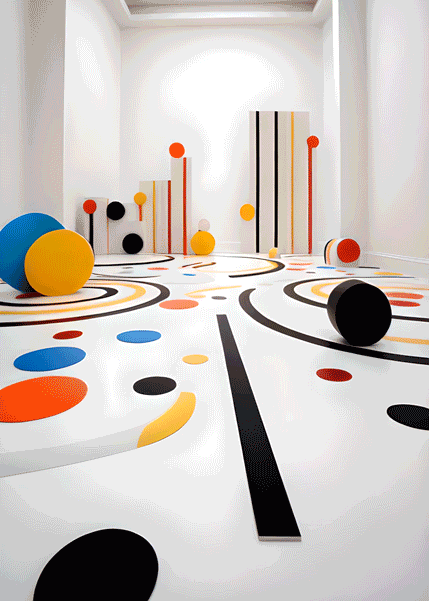
Eventually, I had a collection of footage I could bring into Adobe Premiere Pro to cut together. Oddly enough, some of the Runway generations needed to have a camera stabilization effect applied to them to iron out a frenetic ‘camera shake’ that appeared in some of the clips.
Check out our full generation timeline on TikTok, or see it embedded in our tutorial blog here.
TTYL
Final thoughts until next time.
My workflow is changing so fast that it’s giving me whiplash. I’ve had some doubt even pushing to send this newsletter because Adobe rolled out a huge slough of new AI tools in their flagship Creative Cloud line-up, and I’ve been slowly slogging my way through those updates to get a full understanding of the new capabilities.
For 10+ years, I was reliably working between Illustrator and Photoshop, then Blender and Fusion360, back and forth forever and ever, but within the last 6 months, I have introduced over half a dozen new paid AI-powered tools, I am getting more of my time back, and I am happier at work?! Uh-oh, don’t tell the enterprising capitalists that their dreams are coming true.
Also, speaking of balancing a creative life with the economics of content creation, I recently listened to the Creativity, Inc. audiobook I checked out from LA Public Library; in it, Ed Catmull and Amy Wallace dive into the crafting of Pixar's culture, then provide some interesting insight into how one of the world’s largest media companies wrangles and understands the nebulousness of delivering memorable works of art.
Check it out from your library on Libby. (I am an unpaid Libby hype-person, I just love books.)
Thanks for reading OMG, AI! WTF?!! Subscribe for free to keep receiving new posts directly to your inbox.
If you know anyone who you think would like this sort of learning out loud in the AI space, please share this newsletter and check out Echo Echo Studio for more videos, design goods, client work, and experiments.
xo,
Audrey
If there’s AI stuff you’d like for OMG, AI! WTF?! to look at, leave a comment! Or if you have feedback about the process above, please share! Thanks so much for reading! 👋












Hi Audrey!! This is cool, you're cool! Let me know if you want to catch up sometime!